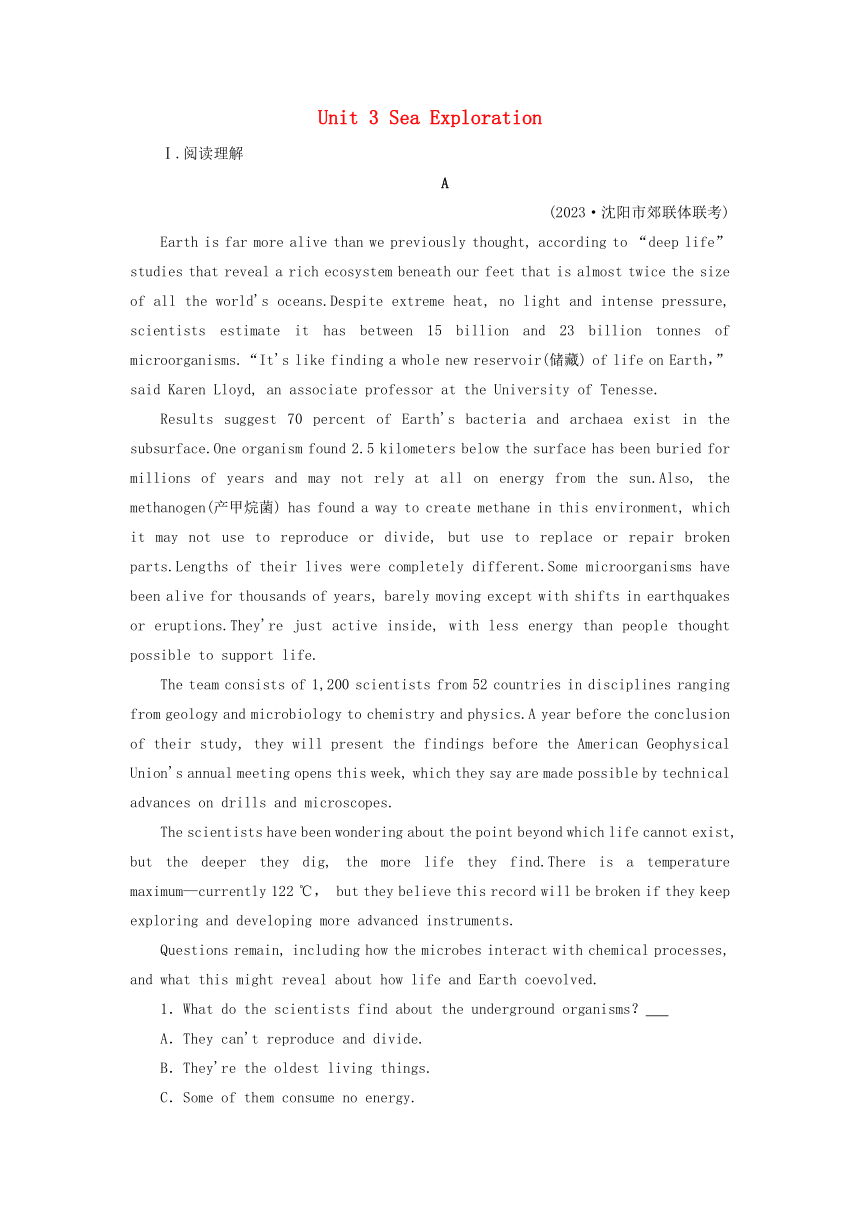
Unit 3 Sea Exploration Ⅰ.阅读理解 A (2023·沈阳市郊联体联考) Earth is far more alive than we previously thought, according to “deep life” studies that reveal a rich ecosystem beneath our feet that is almost twice the size of all the world's oceans.Despite extreme heat, no light and intense pressure, scientists estimate it has between 15 billion and 23 billion tonnes of microorganisms.“It's like finding a whole new reservoir(储藏) of life on Earth,” said Karen Lloyd, an associate professor at the University of Tenesse. Results suggest 70 percent of Earth's bacteria and archaea exist in the subsurface.One organism found 2.5 kilometers below the surface has been buried for millions of years and may not rely at all on energy from the sun.Also, the methanogen(产甲烷菌) has found a way to create methane in this environment, which it may not use to reproduce or divide, but use to replace or repair broken parts.Lengths of their lives were completely different.Some microorganisms have been alive for thousands of years, barely moving except with shifts in earthquakes or eruptions.They're just active inside, with less energy than people thought possible to support life. The team consists of 1,200 scientists from 52 countries in disciplines ranging from geology and microbiology to chemistry and physics.A year before the conclusion of their study, they will present the findings before the American Geophysical Union's annual meeting opens this week, which they say are made possible by technical advances on drills and microscopes. The scientists have been wondering about the point beyond which life cannot exist, but the deeper they dig, the more life they find.There is a temperature maximum—currently 122 ℃, but they believe this record will be broken if they keep exploring and developing more advanced instruments. Questions remain, including how the microbes interact with chemical processes, and what this might reveal about how life and Earth coevolved. 1.What do the scientists find about the underground organisms? A.They can't reproduce and divide. B.They're the oldest living things. C.Some of them consume no energy. D.Some of them almost always keep still. 2.What can we learn about the research from Paragraph 3? A.It lasts for around one year. B.It involves efforts from multiple fields. C.It promotes technical development. D.It is conducted in 52 countries. 3.Why does the scientists drill deep? A.To break their previous record. B.To find the depth limit of life. C.To discover more ancient microorganisms. D.To detect the highest subsurface temperature. 4.What is the best title for the text? A.Earth's Depths Are Full of Life B.Organisms Live Better Underground C.Earth Is Far Beyond Human Exploration D.Subsurface Life Differs From That on Land B (2023·南京市学情调研) Plastic fishing nets, the so-called ghost nets, abandoned yearly in the sea—about 1 million tons—are more than just rubbish;they're a killer.Fish, seabirds, and ... ...
~~ 您好,已阅读到文档的结尾了 ~~

